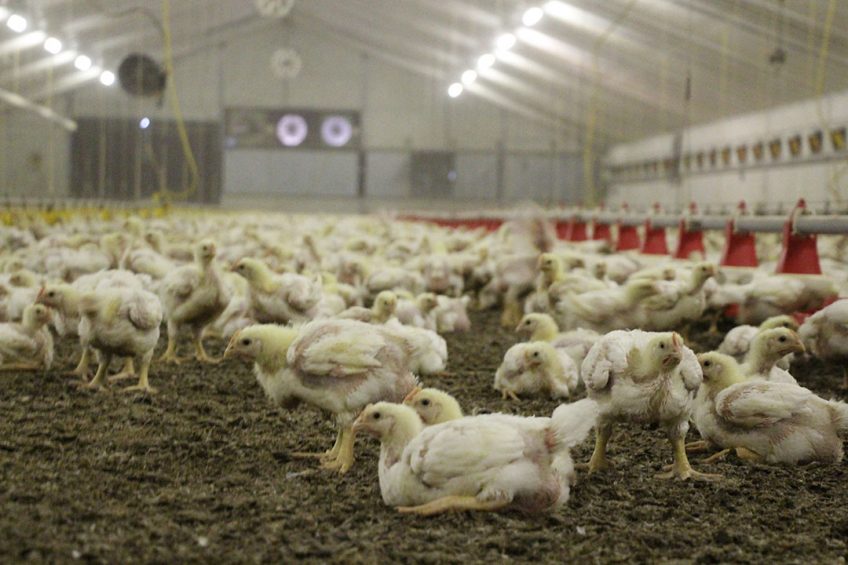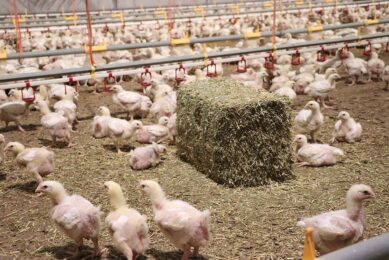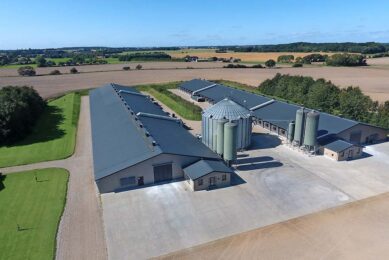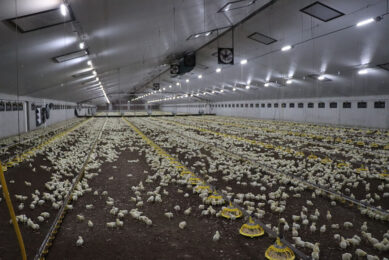Farm Report: How Dutch broiler farmer eradicates Salmonella

Dutch broiler farmer Ad Jansen (54) got rid of a persistent Salmonella infection by applying multiple measures. These included filling cracks and seams and placing beetle strips, together with consistent cleaning, disinfection and sampling after each flock. His consultant, Jan van Beers of De Heus Voeders, noted the appearance of different Salmonella strains, making the battle even more challenging.
 PROFILE
PROFILE
Name: Ad Jansen (54)
Location: Luyksgestel (Netherlands)
Farm: 90,000 broilers in 3 houses.
Broiler farmer Ad Jansen from Luyksgestel in the Netherlands keeps 90,000 broilers in 3 poultry houses. The broilers Jansen produces as an independent farmer are bought by De Heus Voeders. De Heus Voeders subsequently sells the animals to slaughterhouses in the Netherlands and Belgium. In 2016, stables 2 and 3 tested positive for Salmonella infantis. Jan van Beers, consultant and Salmonella expert at De Heus and Jansen believe that the Salmonella infection was probably caused by tainted bedding material. “I was testing new bedding material to achieve lower foot pad lesion scores,” Jansen explains. “After this ordeal I returned to using wood chips again.”
Some Salmonella strains were easy to fight in the past but in recent years there has been a change, especially with the emerging Infantis strain. “We have a lot of experience with the persistent Salmonella java,”says Van Beers. “This may not be a zoonosis, like Enteritis and Typhimurium but at some companies it was very hard to get rid of it,” he continues. ”Salmonella infantis was always easy to combat but that has changed completely. Another complication is that Infantis is currently overtaking the number of Java infections,” Van Beers adds. “Both in numbers and in degree of difficulty to overcome.” Given that the infection was probably caused by bedding material Van Beers advises poultry farmers always to choose certified products.
By taking samples every week you can see at what stage the chickens become infected.”
Plan of Action
Because all the parties involved in the production process, including slaughterhouses, want Salmonella-negative birds, Jansen and Van Beers set up a Plan of Action. They called on the retired vet Pim Eshuis to help them set it up. The Plan was ready in October 2017. “I always point out to broiler farmers the mental pressure that such an Action Plan creates,” states Van Beers. “It is hard to implement in your daily routine and it takes stamina to achieve results.” The Salmonella expert of the Heus Voeders stresses that it is important to keep the finances under control too. The measures implemented must be effective and in proportion.
 Exploring ways to reduce salmonella in poultry
Exploring ways to reduce salmonella in poultry
Researchers from 2 US universities have joined forces with the US Department of Agriculture (USDA) to explore alternatives to antibiotics for reducing salmonella in poultry.
Starting in October 2017 weekly Salmonella samples were taken at Jansen’s farm for a period of six weeks. “By taking samples every week you can see at what stage the chickens become infected.” Everything was thoroughly cleaned and disinfected before the broilers were delivered. After which the sampling began. “We tested everywhere, including all the seams and cracks,” Jansen adds. And it was these seams and cracks that were found to be Salmonella-positive. So they all had to be sealed. On Jansen’s farm this was done using a gel but it can also be done with cement or bitumen. Van Beers says that the kind of material to be used depends on the type of housing.

Disastrous darkling beetle
Van Beers notes that there is a one-to-one relationship between Salmonella and darkling beetles, also called styrofoam beetles because they love to eat this insulation material often used in poultry houses. “So, if a farmer has styrofoam beetles in his poultry houses and a house tests positive for Salmonella infantis or S.java, it is almost impossible to tackle the problem,” says Van Beers. This makes the destruction of these pests a top priority. Van Beers explains: “Normally styrofoam beetles (Alphitobius diaperinus) are found in the birds’ droppings. When the manure cools down, the beetles crawl into secluded places in the house (where you cannot reach them with pesticides). As soon as the house warms up again to receive the next flock, they emerge from these sheltered places causing the day old chicks to become infected again.” Good control of the styrofoam beetle is an important requirement to be free of Salmonella, says the Salmonella expert.

Beetle strip
Cleaning and disinfecting is always done according to protocol. At the end of each flock the manure is removed and the house is sprayed clean. Then the house is degreased: a very important step according to Van Beers. Following which it is sprayed clean again and finally, the house is properly disinfected. Jansen disinfects with chlorine. “Over the years we have tested various products and we saw major differences in effectiveness. Chlorine turned out to be one of the best disinfectants and gives very good results,” Van Beers reports. In combatting the darkling beetle there was one measure taken that topped all the others in terms of its effectiveness. The Dutch broiler farmer installed a contiguous beetle strip on the walls, running all around them at a height of about 1.5 metres. “This beetle strip prevents any beetles crawling into the wall and roof insulation,” Jansen explains.

After one year of consistently applying these measures two of Jansen’s poultry houses were Salmonella-free by October 2018. Unfortunately, house number 3 remained Salmonella positive. It took until April 2019 before this house finally tested negative, too. “We are pleased that we could finally get house 3 free of Salmonella by consistently applying these measures and consistently sampling,” says Van Beers. By meticulously examining their methods and procedures Jansen and Van Beers finally discovered why house number 3 remained infected for so long. “It turned out that there were still some seams and cracks that had not be properly addressed. They have since been re-sealed,” Van Beers reports.
![]() Country reports:
Country reports:
Takes a look at the poultry industry in countries around the world.
To maintain a clear overview of his Salmonella status, Jansen continues to take Salmonella samples every week. “We at Heus Voeders have already developed our own sampling set, specifically for Salmonella samples. This what Jansen uses, of course. We have also developed a comprehensive checklist whereby the poultry farmer can check off what needs to be cleaned and disinfected, and see how to take the Salmonella samples,” Van Beers concludes. Jansen consistently continues to carry out extremely thorough cleaning and disinfection to ensure he can maintain his hard-earned Salmonella-free status.
Join 31,000+ subscribers
Subscribe to our newsletter to stay updated about all the need-to-know content in the poultry sector, three times a week. Beheer
Beheer








 WP Admin
WP Admin  Bewerk bericht
Bewerk bericht